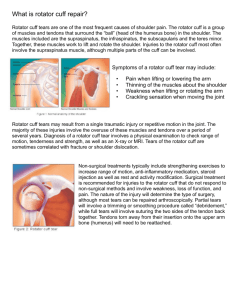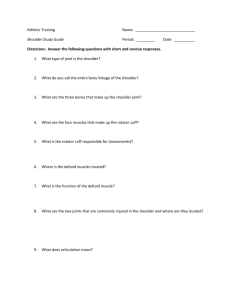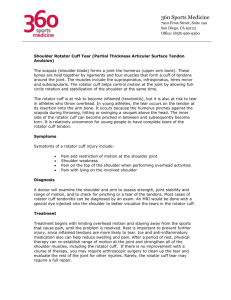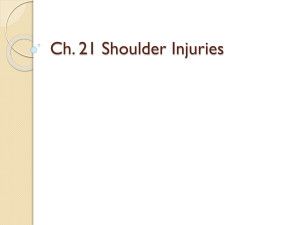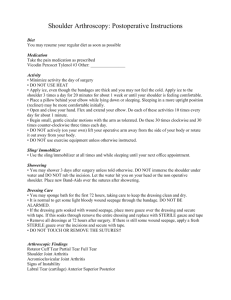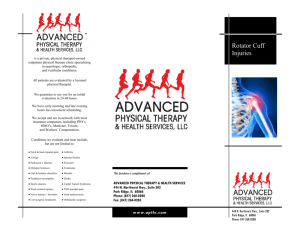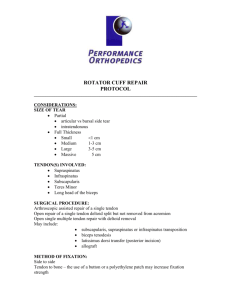Rotator Cuff Tears - Flagstaff Bone and Joint
advertisement
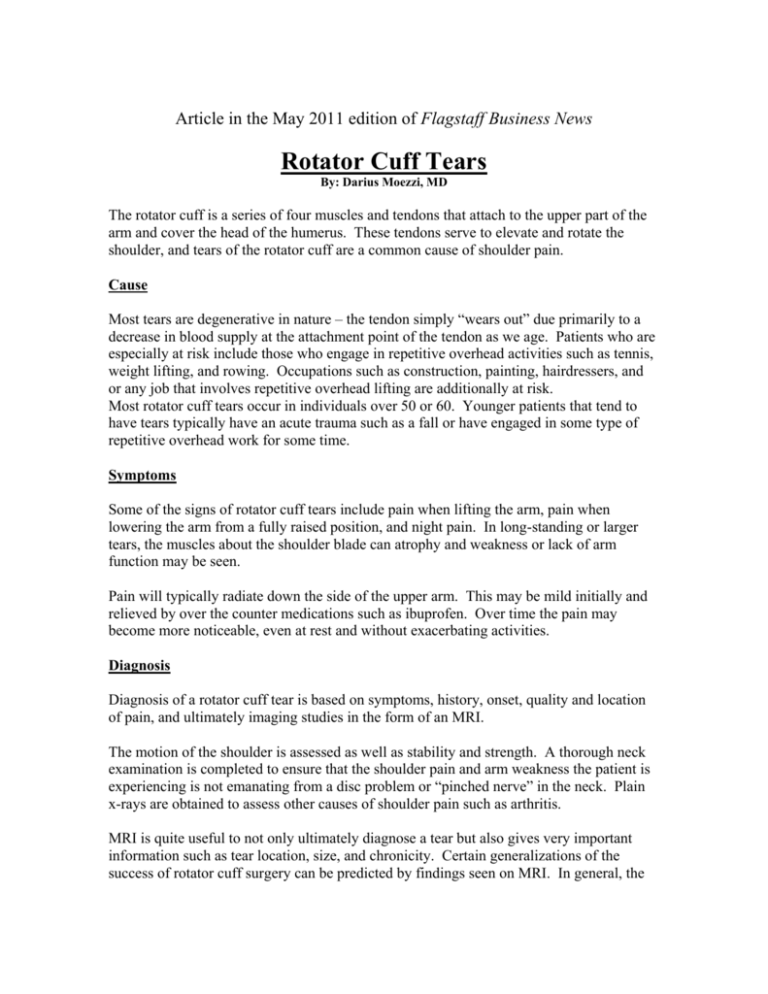
Article in the May 2011 edition of Flagstaff Business News Rotator Cuff Tears By: Darius Moezzi, MD The rotator cuff is a series of four muscles and tendons that attach to the upper part of the arm and cover the head of the humerus. These tendons serve to elevate and rotate the shoulder, and tears of the rotator cuff are a common cause of shoulder pain. Cause Most tears are degenerative in nature – the tendon simply “wears out” due primarily to a decrease in blood supply at the attachment point of the tendon as we age. Patients who are especially at risk include those who engage in repetitive overhead activities such as tennis, weight lifting, and rowing. Occupations such as construction, painting, hairdressers, and or any job that involves repetitive overhead lifting are additionally at risk. Most rotator cuff tears occur in individuals over 50 or 60. Younger patients that tend to have tears typically have an acute trauma such as a fall or have engaged in some type of repetitive overhead work for some time. Symptoms Some of the signs of rotator cuff tears include pain when lifting the arm, pain when lowering the arm from a fully raised position, and night pain. In long-standing or larger tears, the muscles about the shoulder blade can atrophy and weakness or lack of arm function may be seen. Pain will typically radiate down the side of the upper arm. This may be mild initially and relieved by over the counter medications such as ibuprofen. Over time the pain may become more noticeable, even at rest and without exacerbating activities. Diagnosis Diagnosis of a rotator cuff tear is based on symptoms, history, onset, quality and location of pain, and ultimately imaging studies in the form of an MRI. The motion of the shoulder is assessed as well as stability and strength. A thorough neck examination is completed to ensure that the shoulder pain and arm weakness the patient is experiencing is not emanating from a disc problem or “pinched nerve” in the neck. Plain x-rays are obtained to assess other causes of shoulder pain such as arthritis. MRI is quite useful to not only ultimately diagnose a tear but also gives very important information such as tear location, size, and chronicity. Certain generalizations of the success of rotator cuff surgery can be predicted by findings seen on MRI. In general, the poorest results occur in elderly patients with long-standing, very large tears. Smaller tears in younger non-smoking individuals with good tendon quality have the best results. Treatment Options Treatment is based on multiple factors that include patient age, occupation, traumatic nature of tear, and tear size. The initial mainstay of nonoperative treatment includes oral anti-inflammatory drugs such as ibuprofen, physical therapy, and if appropriate, a cortisone injection. If non-operative treatment fails or if there is evidence of a significant full thickness tear of the rotator cuff, rather than simply a frayed tendon, surgical treatment is recommended. Surgical rotator cuff repair is done typically on an outpatient basis. A general anesthetic is employed and tears are usually fixed by a procedure known as arthroscopy. Through a series of small incisions a camera and various instruments are introduced into the shoulder. Anchors loaded with high strength suture are attached to the humerus, and the sutures are weaved through the tendon and tied down, reattaching the torn tendon back to the bone of the humerus. Typically patients will wear a sling for 6 weeks and are allowed to move only their hand, elbow, and wrist. Active shoulder motion is allowed thereafter, with formal, gentle strengthening and weights at 10 weeks. Typically patients gravitate back to all normal activities by 4 to 6 months, though improvement in shoulder motion, strength, and pain can continue to improve upwards of one year. Darius M. Moezzi, MD Dr. Moezzi is fellowship trained in sports medicine and arthroscopy and specializes in disorders of the shoulder and knee. He is a physician for the US Ski and Snowboard Team, an associate master instructor of arthroscopy with the Arthroscopy Association of North American (AANA), and has served as faculty at national shoulder meetings that include the Orthopaedic Learning Center in Chicago as well as San Diego Shoulder.
